
Gracilaria, also known as irish moss or ogonori, is a genus of red algae in the family Gracilariaceae. It is notable for its economic importance as an agarophyte meaning that it is used to make agar, as well as its use as a food for humans and various species of shellfish. Various species in the genus are cultivated among Asia, South America, Africa and Oceania. They produce over 90% of the world's agar.

Ceramium is a genus of Ceramium algae. It is a large genus with at least 15 species in the British Isles.
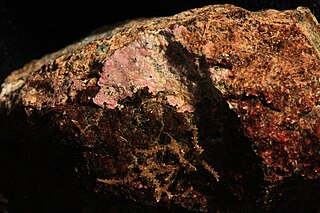
Hildenbrandia is a genus of thalloid red alga comprising about 26 species. The slow-growing, non-mineralized thalli take a crustose form. Hildenbrandia reproduces by means of conceptacles and produces tetraspores.

Claudea is a marine red alga genus.
Polysiphonia atlantica is a small filamentous species of red marine algae Rhodophyta. The thalli form small tufts up to 3 cm long. The axes are ecorticate consisting of axial cells surrounded by four periaxial cells.
Sirodotia huillensis Skuja is a freshwater red algal species belonging to the family Batrachospermaceae. This species mostly reported from high altitude forest streams.
Polysiphonia devoniensis is a species of marine algae. It is a small red alga in the Division Rhodophyta. It is a species new to science only described recently and first published in 1993.
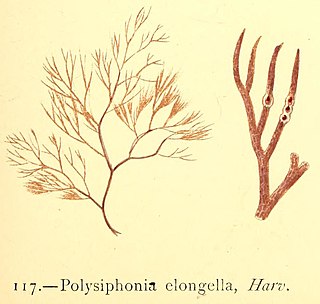
Polysiphonia elongella Harvey in W.J. Hooker is a branched species of marine red algae in the genus in the Polysiphonia in the Rhodophyta.
Polysiphonia fibrata is a species of Polysiphonia that grows as small dense tufted and finely branched marine alga in the Rhodophyta.

Polysiphonia fibrillosa (Dillwyn) Sprengel is a species of marine red alga in the Rhodophyta.

Melanothamnus harveyi, Harvey's siphon weed, is a small marine red alga in the division of Rhodophyta.
Ceramium flaccidum is a small red marine alga in the Division Rhodophyta.

Ceramium ciliatum is a small marine red alga in the Division Rhodophyta.
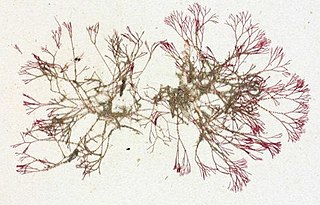
Ceramium cimbricum is a small red alga in the division Rhodophyta.
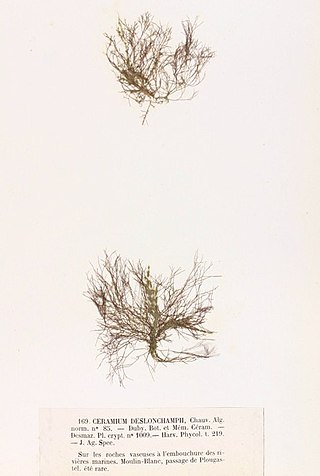
Ceramium deslongchampsii is a small marine red alga in the Division Rhodophyta.

Ceramium shuttleworthianum is a small marine red alga.
Titanophora is a genus of seaweeds belonging to family Schizymeniaceae of the order Nemastomatales.
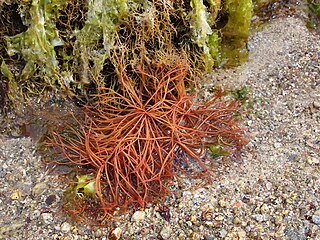
The Gracilariaceae is a small family of red algae, containing several genera of agarophytes. It has a cosmopolitan distribution, in which 24 species are found in China, six in Great Britain and Ireland, and some in Australia and Chile.

Naccariaceae is a family of red algae in the order Bonnemaisoniales, with 3 monotypic genera that are found in both the Pacific and Atlantic Oceans.

Peyssonneliales is a monotypic order of red algae belonging to the class Florideophyceae and the subclass Rhodymeniophycidae. It contains only 1 known family, PeyssonneliaceaeDenizot, M., 1968.












